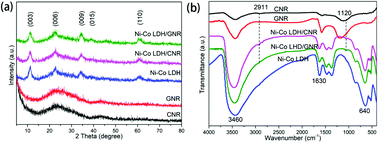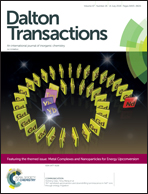Ni–Co layered double hydroxide on carbon nanorods and graphene nanoribbons derived from MOFs for supercapacitors
Abstract
In this study, carbon nanorods (CNR) and graphene nanoribbons (GNR) derived from metal–organic frameworks (MOFs) were first prepared by solvothermal method. Then, Ni–Co layered double hydroxide (LDH)/CNR and LDH/GNR composite materials for supercapacitors were synthesized using a facile co-precipitation method. With the help of GNR, the Ni–Co LDH/GNR composite material showed great specific capacity (1765 F g−1), rate performance (68% capacity retention when current density increased from 1 to 20 A g−1) and cycling stability (83% capacity retention after 2000 charge–discharge cycles at 5 A g−1). Furthermore, an asymmetric supercapacitor (ASC) with Ni–Co LDH/GNR as positive and activated carbon (AC) as negative electrodes was fabricated. The ASC device delivered a high energy density of 25.4 W h kg−1 at power density of 749 W kg−1 and exhibited excellent cycling stability (96% specific capacity retention after 5000 cycles).



 Please wait while we load your content...
Please wait while we load your content...